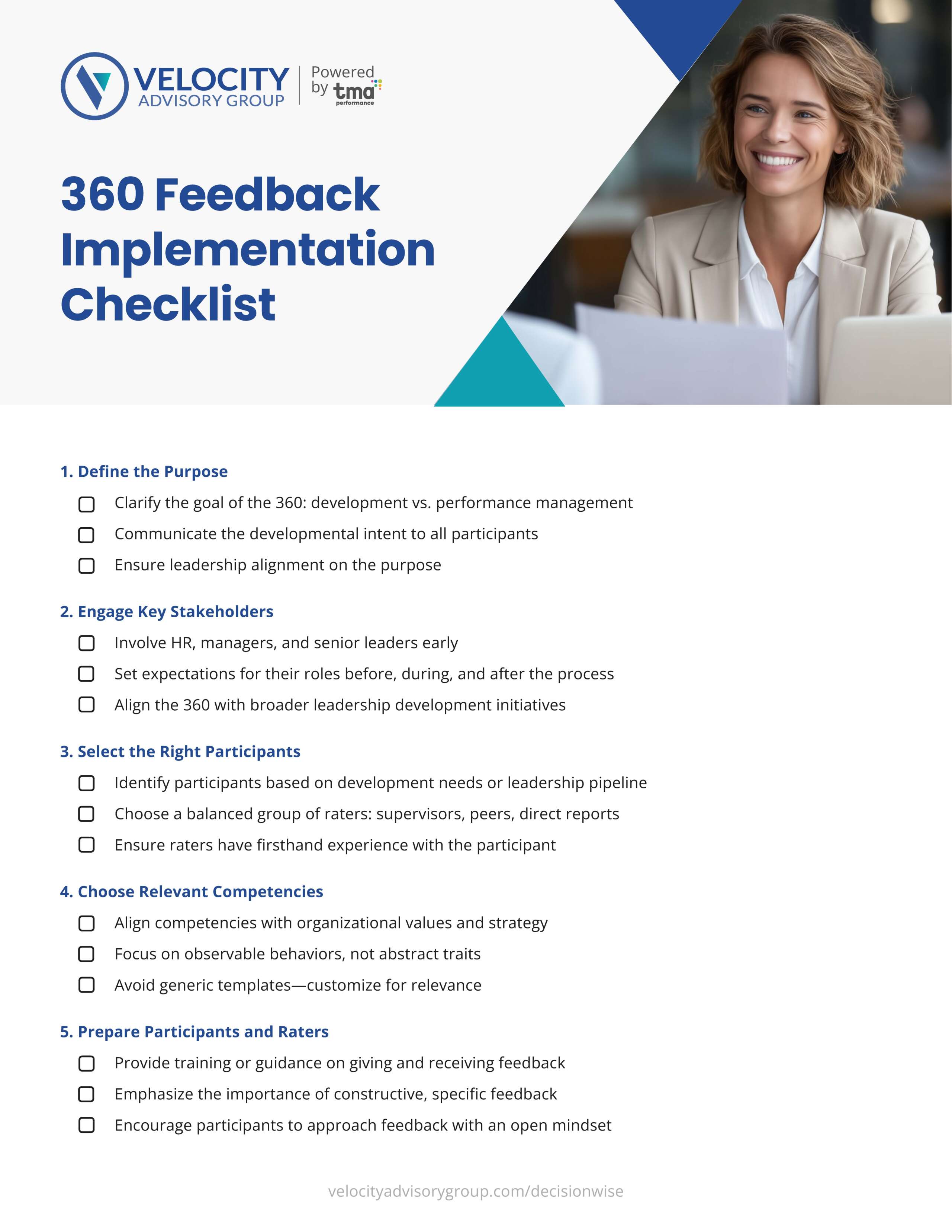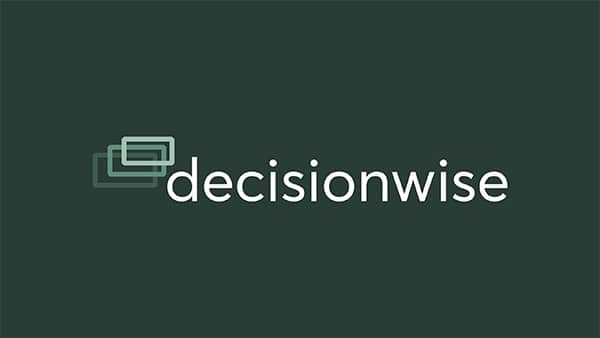360 assessments can be one of the most powerful tools for leadership development. When used well, they give leaders a holistic view of how they are perceived by colleagues, direct reports, and supervisors, often surfacing blind spots that traditional performance reviews miss. But in some cases, 360s can feel punitive and erode trust.
To get the most out of the process, organizations need to approach 360 assessments with intentionality. Here are some best practices that ensure 360 feedback becomes a catalyst for growth and stronger leadership.
1. Define the Purpose
Before launching a 360, clarify the “why.” Is the goal to help someone improve and grow, or to document performance concerns? If the process feels punitive, participants are likely to become defensive, and the value of the feedback diminishes. When framed as an opportunity for development; however, 360s create openness, curiosity, and real change.
2. Engage Key Stakeholders
360 assessments shouldn’t happen in isolation. HR, managers, and senior leaders should help set expectations and reinforce the purpose of the process. Stakeholders also play a critical role in supporting participants after the assessment, ensuring the results don’t just sit on a shelf but translate into action.
3. Choose the Right Raters
The quality of the feedback depends on who gives it. Select raters who work closely with the participant and can provide meaningful, firsthand insights. This should be a balanced group of supervisors, peers, and direct reports. Feedback from the right mix of people builds credibility and trust in the results.
4. Select the Relevant Competencies to Measure
Not all 360s are created equal. Using a generic template often leads to vague or irrelevant insights. Instead, choose competencies that align directly with your organization’s values and strategy. Focus on observable behaviors, not abstract traits, so feedback is both meaningful and actionable.
5. Prioritize Action Planning
Feedback alone won’t drive change. What participants do with the feedback matters most. Build in time and support for turning insights into a clear action plan. Encourage participants to identify 2–3 concrete steps that will help them grow in the areas that matter most.
6. Build Accountability Structures
An action plan is only as strong as the accountability behind it. Set up regular check-ins to track progress, measure outcomes, and revisit development goals. It can help to have a neutral third party, like an executive coach, so help the employee on track and to measure improvement over time. Accountability ensures the 360 process leads to sustained behavior change, not just short-term awareness.
7. Communicate Transparently
Transparency is critical to building trust in the process. Be clear about confidentiality: who will see the results, how they’ll be used, and what participants can expect. Communicate the purpose, process, and outcomes to both raters and participants upfront. When everyone feels informed and safe, they’re more likely to engage honestly and constructively.
8. Timing and Frequency Matter
Don’t overuse 360s. Annual or biannual assessments are often enough to provide meaningful insight without overwhelming participants. Too frequent, and the process can feel like micromanagement; too infrequent, and feedback loses its impact. Align timing with leadership development cycles, not just annual performance reviews.
9. Prepare Participants and Raters
Provide training or guidance before launching. Participants should understand how to approach feedback with an open mindset, while raters should be encouraged to give constructive, specific feedback rather than vague comments. This preparation increases both the quality of feedback and the participant’s ability to receive it productively.
10. Provide Support After the Assessment
Feedback can be overwhelming, particularly when it highlights blind spots. Offering coaching, mentoring, or structured debrief sessions ensures participants don’t get stuck in defensiveness but instead see their results as an opportunity to grow. A support system also makes it more likely that insights will translate into action.
11. Focus on Strengths as Well as Gaps
While it’s tempting to use 360s primarily to identify weaknesses, the most effective assessments also highlight strengths. Recognizing and leveraging what participants already do well builds confidence and motivation, which creates a stronger foundation for addressing development areas.
12. Protect Confidentiality and Anonymity
If participants doubt the process is truly confidential, raters may soften their feedback, or participants may distrust the results. Make anonymity a cornerstone of your process, and clearly explain how data will be collected, reported, and shared. Protecting confidentiality encourages honest input and builds trust in the process.
13. Measure ROI and Organizational Impact
Finally, don’t treat 360s as one-off exercises. Track whether the process improves leadership effectiveness, employee engagement, or team performance over time. Demonstrating ROI helps position 360s not just as an HR tool but as a business driver that strengthens culture and performance.
Used well, 360s don’t just help individual leaders grow — they create stronger teams, healthier cultures, and organizations that thrive.



